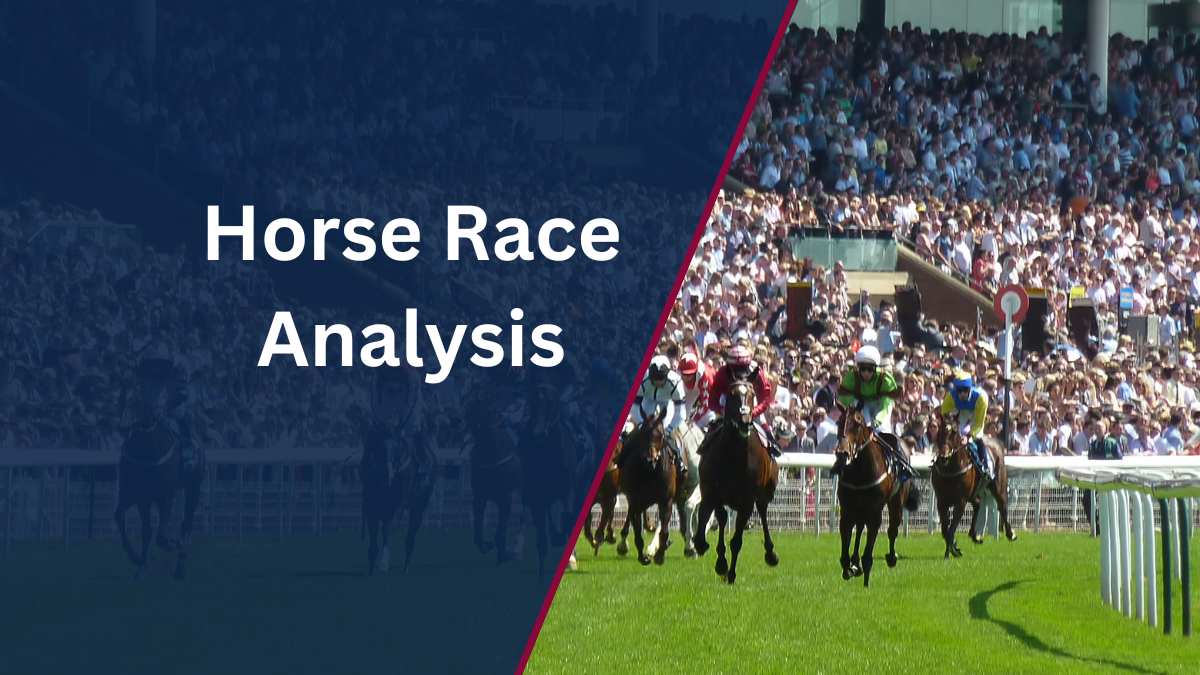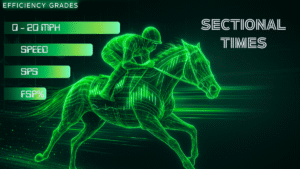Horse Racing System Articles

Horse Race Analysis 01/08/2025
2.15 Southwell – Class 6 Handicap – 5f (Tapeta) Date: 1st August 2025 | Surface: AW Tapeta | Pace: Strong

Horse Racing Tips Service
Horse Racing Tips Horse racing tips are one of the most in-demand resources in betting, with thousands of punters searching

Obvious Edge: Daily Short Odds Horse Racing Selections
Obvious Edge: Daily Short Odds Horse Racing Selections This is the live home for daily selections from the Obvious Edge

Horse race analysis 22/07/2025
8.00 Wolverhampton – HighBet Weekly Racing Rewards Club Handicap Class 6 | 3yo Only | 7f (Tapeta, Standard) | 9
How To Build A Horse Racing System Guide: What They Are, How to Build One, and Why Back-Fitting Fails
Horse racing systems are structured sets of rules designed to identify potential betting opportunities based on historical trends or performance patterns. Typically built around stats like course form, trainer records, or draw bias, systems aim to highlight value where certain conditions repeat over time. The key appeal of a system is that it removes emotion from betting decisions, offering a methodical approach to race analysis. But while some systems are grounded in solid logic, many fall into the trap of being overly tailored to past results—often with disappointing outcomes when applied in real time.
Using Software to Build Horse Racing Systems
The best way to build a horse racing system today is by using software. We’re fortunate to live in an era where access to racing data is faster, easier, and more affordable than ever. Modern platforms allow you to test ideas, apply filters, and analyse results within seconds—something that used to take hours manually. The last thing you want is to spend three hours a day maintaining a system. That defeats the point. A good tool or database will not only streamline your research but can even automate daily qualifiers via email, saving time and keeping your focus where it matters—on refining the logic behind the system, not doing admin.
Types of Horse Racing Systems: Long-Term, Micro, and Short-Term Use-Until-Profit
There are many different types of horse racing systems, and learning how to build a horse racing system is much easier than most people think. Over time, I’ve found that most systems naturally fall into a few key categories. The three I focus on are: the long-term horse racing system, the micro system, and something I like to call the short-term “use-until-profit” system. Each has its purpose, and understanding when and how to use them is a big part of finding long-term success. Some are designed for consistency over hundreds of bets, while others are short-lived strategies that exploit temporary edges in the market.
Long-Term Horse Racing Systems
A long-term horse racing system is designed to perform steadily over hundreds, if not thousands, of bets. The goal is not to chase quick profits, but to build a strategy that holds up year after year, even through natural losing runs. These systems usually focus on strong logic—such as proven course biases, trainer patterns, or class-based angles—that have stood the test of time. Long-term systems tend to operate with larger sample sizes, lower volatility, and a strong emphasis on consistency rather than spectacular short bursts of profit. They require patience, discipline, and trust in the overall edge rather than reacting to short-term swings.
Micro Horse Racing Systems
Micro horse racing systems are smaller, highly targeted strategies that focus on very specific conditions or narrow angles. Unlike long-term systems, they might only produce a handful of bets each month, but the idea is to capitalize on a strong, sharp edge within a tight set of rules. Examples could include following a particular trainer at a specific track, or backing horses with a certain profile in early-season handicaps. Micro systems usually don’t provide enough volume to stand alone as a full betting approach, but they are excellent as “bolt-ons” to a bigger portfolio, adding extra profits from small but consistent opportunities.
The real strength of micro systems comes when you build a large portfolio. Individually, a single micro system might only make a small profit over a season—say 20 to 40 points. But if you run 100 to 150 micro systems side-by-side, the results can compound significantly. For example, if each system produced just 30 points profit in a year, a portfolio of 150 systems would generate a combined profit of 4,500 points. The idea isn’t to rely on one or two standout systems, but to build layers of small, consistent profits that add up into something much bigger over time.
See Example Micro Horse Racing System Here
Short-Term “Use-Until-Profit” Horse Racing Systems
Short-term “use-until-profit” systems are designed to exploit temporary edges that won’t last forever. These systems might focus on a stable hitting top form, a newly emerging track bias, or a pattern the market hasn’t caught onto yet. The goal is to use the system while it’s working, secure profits, and move on once the edge fades.
One particularly useful angle in short-term system building is understanding trainer behaviour. Medium-sized yards often have limited numbers of horses, meaning they can’t afford to waste opportunities. Unlike the big powerhouse stables that can send out five or more runners a day, these trainers have to be much more selective. Racing is a business, and when a smaller trainer spots a chance to win prize money, they often place their horses more cleverly. Spotting these placements—especially when they aren’t obvious to casual punters—can create short-term betting opportunities that are highly profitable before the market adjusts.
Short-term systems do require a more flexible, hands-on approach, but when used correctly, they can be a very powerful part of an overall strategy.

Bet £10 Get £40
claim Now
Bet £10 Get £30 FREE BETS
Claim Now
Bet £10 Get £20 FREE BET
Claim Now
Bet £10 Get £50 In Multiples
Claim Now
Bet £10 Get £50 In Multiples
Claim Now




The Problem with Back-Fitting in Horse Racing Systems
No matter what type of horse racing system you are creating, if it has been back-fitted, it simply won’t carry forward into future profits. Back-fitting happens when someone adjusts a system to fit perfectly around past results, often by adding just enough filters to make it look successful on paper. The problem is that these filters usually have no real-world logic behind them—they only serve to ‘cherry-pick’ winners that already happened.
This is exactly what often happens when you see horse racing systems for sale that show fantastic historical results. They look incredibly impressive on paper, but once you start using them in real time, the results almost always fall apart. Any system can be made profitable in hindsight if you keep adding enough rules, but that doesn’t mean it will work going forward.
A properly built system needs to be based on racing logic, not just past data. If a system has been back-fitted, it is effectively broken before you even place a single bet.
Example of a Back-Fitted Horse Racing System
To see back-fitting in action, let’s look at a simple example.
Initially, we create a very basic system using only two rules:
Race year is 2023, 2024, or 2025
Number of course-and-distance (CD) winners in the race is between 2 and 4
At this stage, the system is unprofitable. The return on investment is negative, and there’s no evidence that the setup would perform well moving forward. However, if we now start sorting trainers by win percentage and adding only the ones who boost the results, something interesting happens.
By hand-picking the top-performing trainers from the data, suddenly the system shows over £655 profit to £1 level stakes and a 22% strike rate. It looks like a winning system—but it’s completely back-fitted. The system has been manipulated by selecting only the data that improved the past results, not by following any sound, logical reasoning.
In reality, this system has no future edge. It’s simply been moulded to match past results, and it is very unlikely to perform anywhere near as well when betting live.

After adding trainers

Obviously, this is a very basic example of a horse racing system with no real logic behind it, but the point is important. I see systems like this almost every day—built purely by manipulating past results to make them look profitable. It’s something you really need to think about when you’re creating your own horse racing systems. Always ask yourself: does the system make logical racing sense, or have the filters simply been added to force the numbers to look better? If there’s no solid foundation behind the rules, the system is unlikely to stand up when used in real-time betting.
Horse Racing System Selections.
How to Build a Horse Racing System (Properly)
Building a solid horse racing system starts with one simple rule: the logic must come first, not the data. Before you even look at past results or statistics, you need a clear idea of why a certain angle might offer an advantage. Good systems are based on real-world racing knowledge—things like trainer patterns, course characteristics, class drops, fitness angles, or seasonal trends—not just numbers that happened to work before.
Once you have a logical starting point, the real work begins. Here’s the step-by-step process:
1. Start with a Clear Hypothesis
Before touching any data, write down your system idea clearly.
Example:
“Horses running at Chester over 5 furlongs from low draws perform better because of the track’s tight configuration.”
If you can’t explain the logic in a simple sentence, the idea probably needs more thought.
2. Define Broad, Logical Filters
Apply filters that make racing sense, not filters picked to force better results.
Examples of logical filters:
Specific courses known for unique biases
Race types like handicaps versus maidens
Number of runners (e.g., 8+ runners to exaggerate draw bias)
Ground conditions (e.g., soft ground specialists)
These filters should be chosen before you check the profits.
3. Test Across a Large Timeframe
Always test your system over at least 5 to 10 years of data.
Why? Because almost anything can look good over 6 months. A real system should survive different racing seasons, surface changes, weather patterns, and market adjustments.
If it only works in a tiny window, it’s probably back-fitted.
4. Watch Out for Over-Fitting
Be strict with yourself:
Avoid stacking unnecessary rules.
Only add filters if they make logical racing sense.
If you add a new rule, ask yourself:
“Would I have thought of this BEFORE seeing the results?”
If the answer is no, you’re probably over-fitting.
5. Analyze Strike Rate, ROI, and Drawdowns
Strike Rate: Higher strike rates = smoother betting experiences, but often lower odds.
ROI (Return on Investment): Ideally positive, but don’t chase crazy numbers—sustainable ROI between 5–20% is realistic.
Drawdowns: Look at the worst losing runs. Can you mentally and financially survive them?
A system that doubles your money on paper but has 50+ bet losing streaks may not be practical to follow.
6. Small Adjustments Only After Logic-Driven Testing
Once you’ve built the basic system and tested it, small adjustments can be considered.
Example:
“Maybe only apply the system from April to September if that’s the horse’s best form window.”
But any changes must be based on racing understanding, not just because the graph looks nicer.
7. Paper Test New Systems First
Before risking real money, paper test your new system for a few weeks.
This lets you confirm if the system behaves as expected under live market conditions.
8. Build Portfolios, Not Just One System
No system wins every day. The smartest approach is to build a portfolio of logical systems—some short-term, some long-term, and some micro-systems—to balance out variance and keep your betting consistent.







